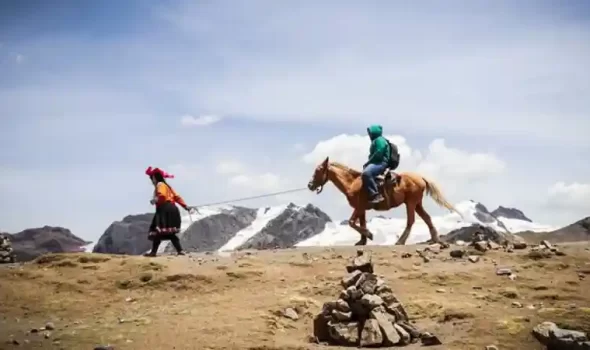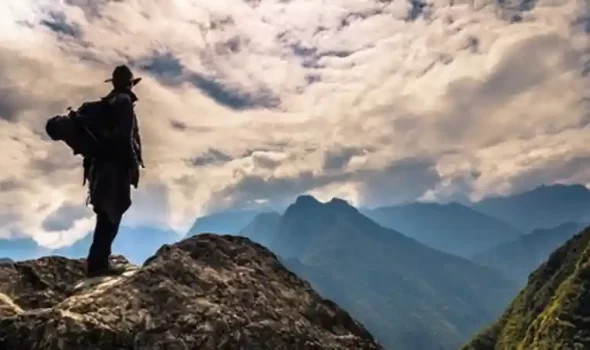The archaeological site of Choquequirao is an Inca site that is at the level of Machu Picchu in terms of architectural beauty. Choquequirao is known as “The Sacred Sister of Machu Picchu” because of the similarity between the two Inca sites. Due to the remote location of the site, it can only be accessed by trekking of several days. Join Auri Peru Travel to visit one of the most beautiful and hidden Inca sites in Peru.
What is Choquequirao?
The Choquequirao Archaeological Complex is part of a group of Inca constructions dating back to the Inca period. Choquequirao includes numerous architectural remains: Inca terraces, platforms, ceremonial plazas, temples, reservoirs, fountains and canals, connected by endless stoned stairs and through a network of Inca trails.
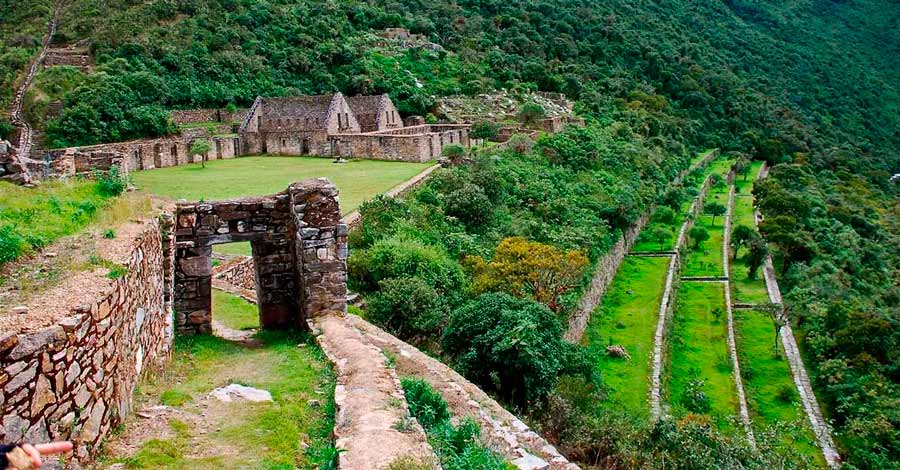
Where is Choquequirao?
The archaeological site of Choquequirao is located northwest of the town of Cachora, considered one of the main sites of the Inca culture. Choquequirao or Choqek’iraw is located in the Eastern Cordillera of southern Peru, between the UTM coordinates 730250 E, 8518400 N. Choquequirao belongs to the district of Santa Teresa, province of La Convención in the Peruvian region of Cusco.
The town of Cachora, which serves as the main access to Choquequirao, belongs to the district of Cachora, province of Abancay and the Apurimac region. The Apurimac River is the natural geographic boundary between the Apurimac and Cusco regions. In other words, the Inca site is located in Cusco and its main access point is in Apurimac.
Geographical location of Choquequirao
The archaeological site of Choquequirao is located on the southern slope of the Eastern Cordillera and on the right bank of the Apurimac River, very close to the Qoriwayrachina snow-capped mountain 5404 meters/17 729 feet, which was very important for the site. It is surrounded by snow-capped peaks Pumasillo and Choqetacarpo to the north, Wiracochan to the northwest, Ampay to the south and Salkantay to the east, the last one is the second-highest mountain in Cusco with 6264 meters/20551 feets.
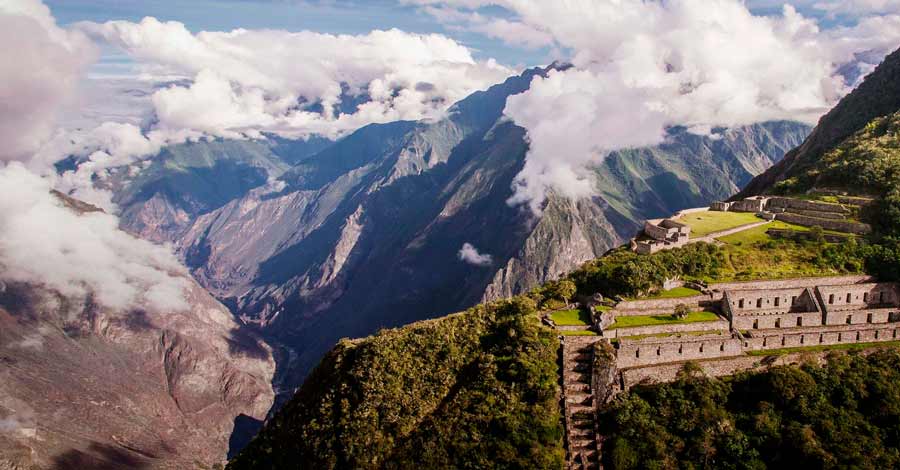
What is the altitude of Choquequirao?
Choquequirao is located between the foothills and the summit of the mountain bearing the same name and stands at 3104 meters/10184 feet on what is described as a rocky spur of the Yanama mountain range within the Vilcabamba range to the right bank of the Apurimac River.
What does Choquequirao mean?
The name Choquequirao is composed of a Quechua archaism that refers to gold and a word still used today by Quechua speakers (K’iraw) that indicates mountain or hill. The original word, following the linguistic morphology, would be “Chuqik ‘iraw”, which conventionally would mean “Cradle of Gold”. The term denotes a meaning that alludes more to the functions established by the Inca power in the area, a place of prestige and power. However, it is also a term that was used after the fall of the Inca empire.
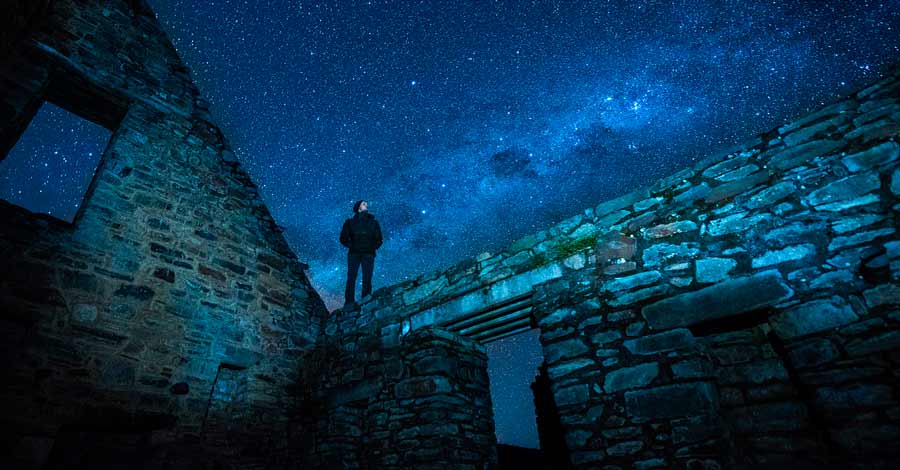
Choquequirao Climate
The region has a temperate to warm, humid and rainy climate from December to March, and during the rest of the year it is sunny and dry, the average temperature is around 20°C (68°F). The best time to travel to Choquequirao is from April to October.
Choquequirao is above 3000 meters of altitude, it is kept humid by the presence of rain and fog. For this reason, we find dense vegetation throughout the area.
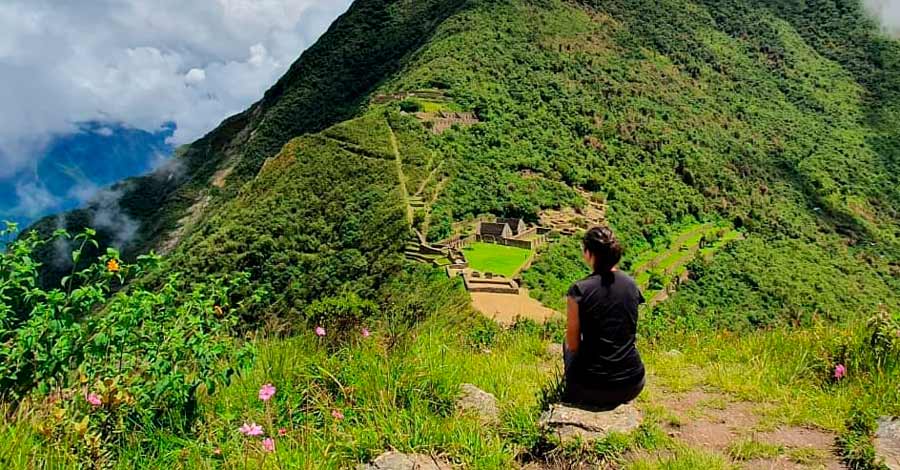
When was Choquequirao built?
According to the author Liliana Regalado, there are no written sources such as chronicles that refer to the time of construction of Choquequirao. However, its antiquity can be contrasted with archaeological data.
Its characteristics make us think in a hypothesis that this Inca site was reconstructed by Tito Cusi Yupanqui, and that its antiquity corresponds to the beginning of the Inca domain in this remote place of the jungle. That is, to the period of the Inca Pachacutec during the XV century. Pachacutec was the one who probably arrived in this area, Choquequirao would have been built during the successive governments of the Inca Tupac Yupanqui and Huayna Capac.
Choquequirao history
In pre-Inca times, the Choquequirao area was inhabited by ethnic groups from the jungle called “antis”. Among these ethnic groups were the Manaries and Pilcozones. The area of the Antis was conquered by the Inca Pachacutec during the 15th century. Subsequently, the area would be successively reconquered by Tupac Yupanqui and Huayna Capac. For the Incas, the expansion in these territories was never simple or definitive.
In 1537, Manco Inca chose the Antisuyo area to start a resistance against the Spaniards. Some populations of the Antisuyo provided products to the Inca resistance, and in reciprocity, the Incas gave other products of value that they used to accumulate as salt and fabrics.
Some versions say that Choquequiraro was the royal estate of the Inca Tupac Yupanqui. Evidence that it was the estate of Tupac Yupanqui is provided by colonial documents in which his great-grandson, the Inca Sayri Tupac, claimed ownership of Choquequirao and neighboring lands.
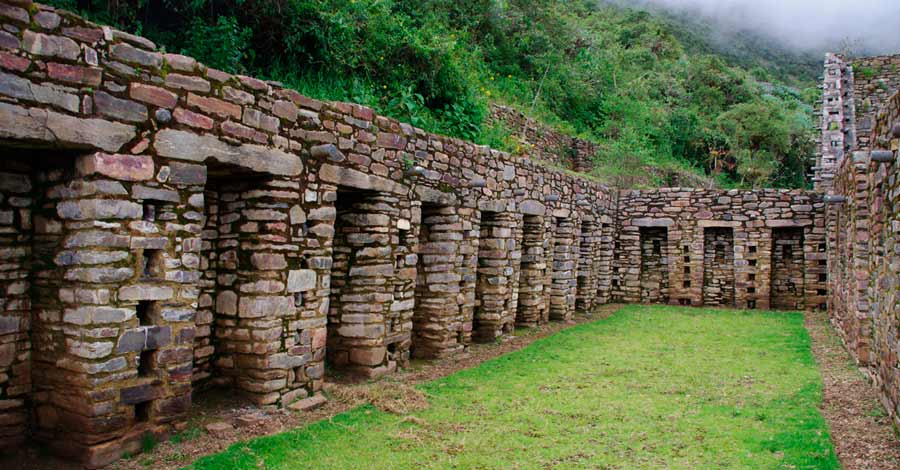
What to see in Choquequirao?
Flora and Fauna in Choquequirao
Choquequirao has been considered a Regional Conservation Area and therefore a protected natural area that aims to conserve biological diversity. Sixteen endemic species of birds, 93 species of plants and other representative species of the area have been inventoried. The most important species are the spectacled bear, the Andean cock of the rock, viscachas, pumas, condors, and toucans. Choquequirao also conserves a great variety of orchids.
The archaeological sites of Choquequirao
Choquequirao was organized in two halves: High Sector or Hanan and Low Sector or Hurin. Other sectors are the Ceremonial Platforms or Chaqra Andén, Pikiwasi, Paraqtepata, Phaqchayoq, Las Llamas and Sunchupata.
The Main Temple
Located at the southwestern end of the plaza, it is accessed through four doors facing east. This structure leaves space to the south for a small construction that contains two interior water fountains, called paqcha.
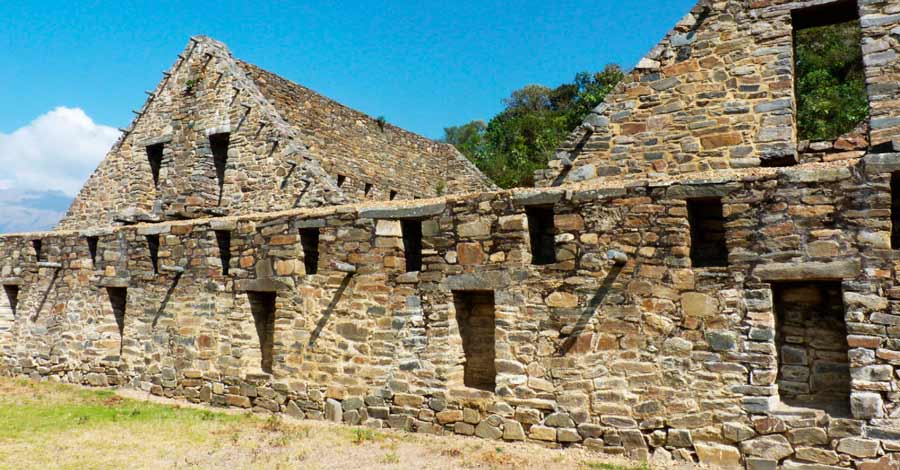
The Hurin Temple
It has a rectangular floor plan and two levels, occupying the southern end of the plaza. Its northern facade has four trapezoidal doors with double jambs, typical characteristics of Inca ceremonial architecture.
The ushnu
At the southern end of Choquequirao, there is a semicircular truncated hill that is defined as a ceremonial platform or ushnu. In Choquequirao, the term ushnu designates a large natural rocky mound with a flattened top, probably ceremonial, more or less circular in shape, and surrounded by a small parapet interrupted to the northeast.
House of the Priests
The farthest part of the southern slope of Choquequirao corresponds to a fountain as well as two two-story buildings, one facing the other with symmetrically opposed doors. These buildings are called the House of the Priests because of their very particular location and orientation.
Pikiwasi
At an altitude of 3020 meters, there is a place called Pikiwasi or “House of the Flea”. It corresponds to a group of rectangular and circular structures, built on narrow terraces, separated by narrow streets of parallel passages, from where small staircases emerge.
Chaqra platform
One of the most spectacular sets of platforms visible from afar are those on the eastern slope, known as Chaqra andén. In this sector, the terraces are grouped in four sets that extend over three levels and give the site its identity.
Phaqchayoq
This site is located at an altitude of 2475 meters, at the foot of the eastern slope of the Choquequirao mountain and on the right bank of the Chunchumayo river. It consists of a vast complex of terraces. Its name translates as “the waterfall”, in reference to the waterfall located to the northeast.
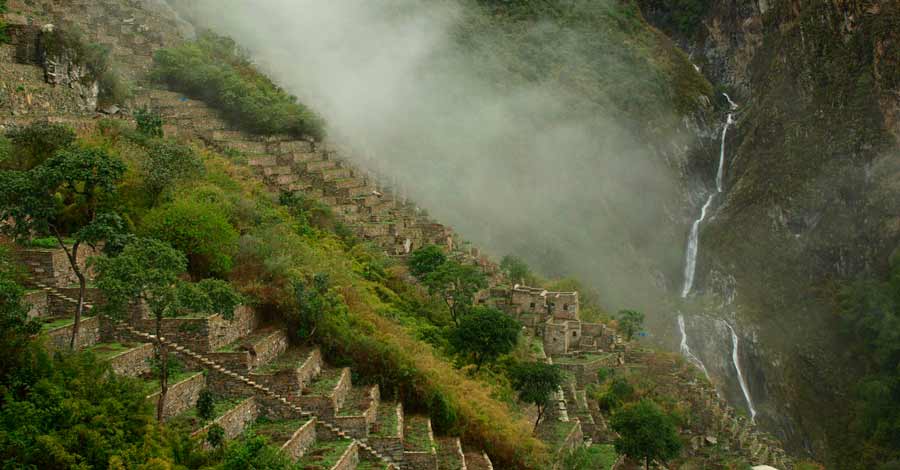
Paraqtepata
This is a series of terraces located on the same slope on the east side of Choquequirao hill, in one of the steepest and most difficult to access areas.
Las Llamas
This sector is located to the west of the Main Plaza. This slope is one of the most striking sectors of Choquequirao has about one hundred and twenty-nine narrow terraces, twenty-five of which have retaining walls decorated with mosaics representing twenty-eight designs that correspond to 23 figures of camelids (llamas) aligned and oriented towards the east.
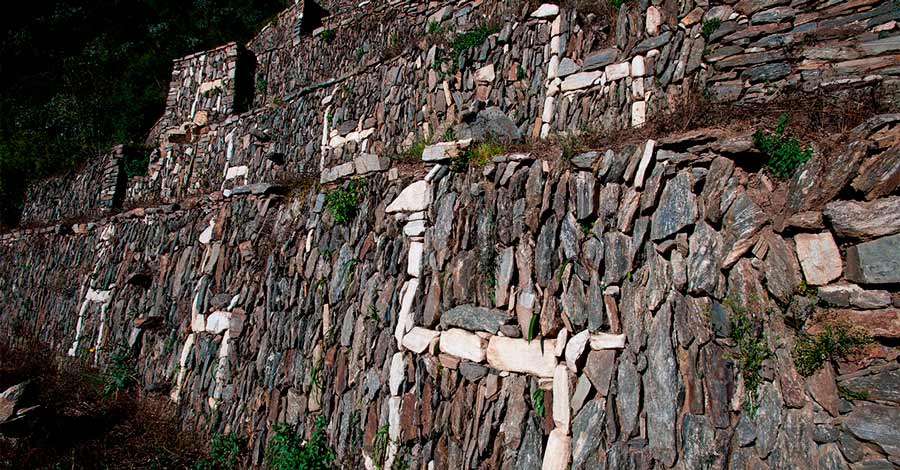
How to get to Choquequirao?
Currently, the only way to get to Choquequiro is through a 4-day or 5-day hike. This is probably one of the most extensive and demanding hikes in the region. However, this archaeological site completely fulfills the expectations of a traveler by having an architecture that has nothing to envy to Machu Picchu. The feeling of being in this place is unique in all aspects.
Choquequirao trek 4 days
The route this day is the following:
- Day 1: Cusco – Chiquisca
- Day 2: Chiquisca – Choquequirao
- Day 3: Choquequirao – Playa Rosalina
- Day 4: Rosalina Beach – Cachora
Choquequirao trek 5 days
In this case, the route is the next one:
- Day 1: Cusco – Cachora – Chiquisca
- Day 2: Chiquisca – Playa Rosalina – Marampata – Choquequirao
- Day 3: Choquequirao
- Day 4: Choquequirao – San Ignacio – Carmen
- Day 5: Carmen – Tambobamba – Huanipaca
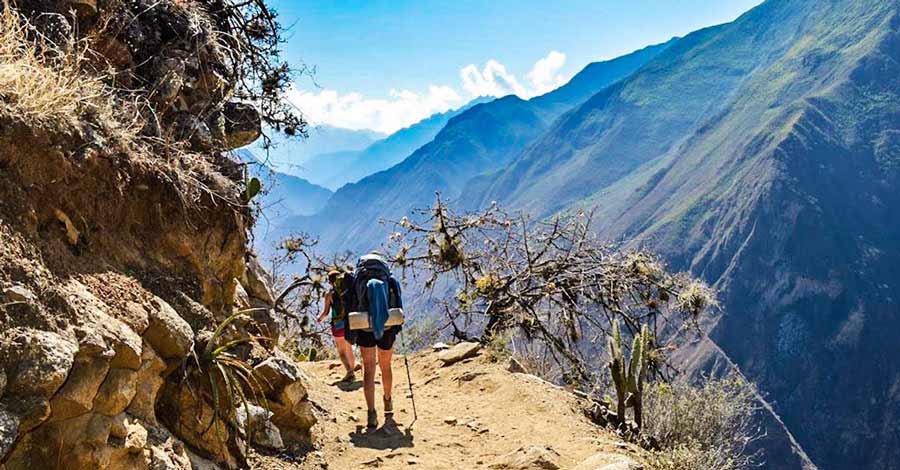
Choquequirao trek 5 days, detailed itinerary
Day 1: Cusco – Cachora – Chiquisca
We will leave Cusco (3350m/10991f) at approximately at 5:30 am on the first morning. On this leg of the trip we will head straight for the village of Cachora (2850m/9350f), there we will meet our horse guides, with horses and mules that will carry all the camping equipment during the expedition. From there we will continue our journey towards the pass of Capuliyoc (2800m/9186f). The trek offers a stunning view of the mythical mountain Padreyoc, the deep canyons and the river Apurímac which the locals call “speaking river”. Finally, we will descend towards the picturesque canyon’s interior named Chiquisca (1930m/6332f), where we will spend the first night.
Day 2: Chiquisca – Playa Rosalina – Marampata – Choquequirao
After enjoying breakfast, we will make the descent to La Playa Rosalina (1550m/5085f). From here, we’ll continue our journey to Marampata (2850m/9350f), where we can enjoy the beautiful scenery of the archeological complex of Choquequirao (3033m/9951f) and the surrounding area. Our camp site is located 25 minutes from the settlement.
Day 3: Choquequirao
At sunrise, we will first visit the archaeological site of Choquequirao. At this time of the morning, only 30% of this region known as the “golden cradle” has been exposed to light making it an incredible sight. Our expert tour guides will take you to discover the history and recent excavations of Choquequirao, whose importance is only starting to be fully understood, holding many ancestral secrets of the Inca and the nature they had been so deeply connected with. Hiking time: approximately 6 hours
Day 4: Choquequirao – San Ignacio – Carmen
After breakfast, we’ll take our belongings, descending the Apurímac canyon’s to its deepest part called San Ignacio at 1500m/4921f and have lunch. Finally, we will hike up to our camping site for the night, in the beautiful gardens of Carmen located 2000m/6562f above sea level.
Day 5: Carmen – Tambobamba – Huanipaca
The gardens of Carmen are located in close proximity to the manor of Tambobamba (2500m/8202f), a region governed by landowners since the 19th and 20th century and considered to be one of the most fertile valleys, capable of cultivating maize and a variety of potatoes vital to the people of the region. We will pass little villages such as Pacobamba and Huanipaca (3150m/10335f), finally returning to Cusco by bus.
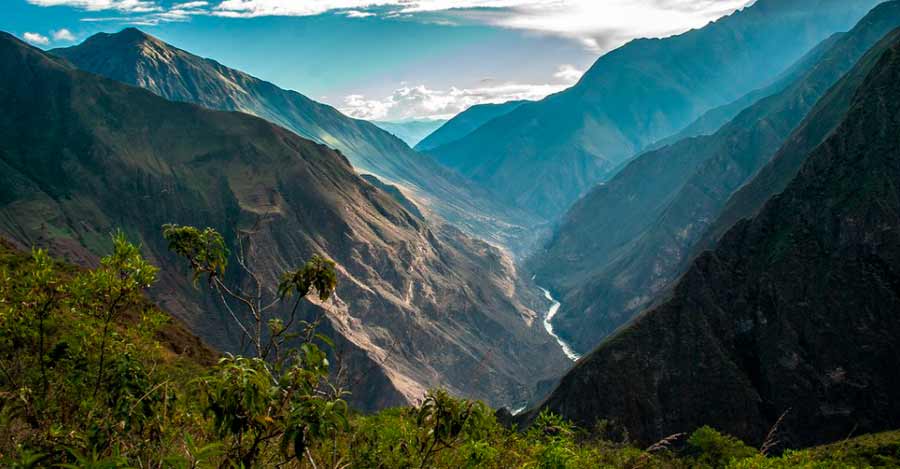
How hard is the Choquequirao trek?
The hike to Choquequirao crosses important points and campsites such as Capuliyoc, Maranpata, and Sunchupata. The route starts in Cachora at almost 3000 meters altitude and descends to the Apurimac River. Then the route ascends to the high jungle. It is estimated that from Cachora, after 32 kilometers of trekking, the archaeological site of Choquequirao is reached.
The route could be defined as levels 2 and 3 on a difficulty scale of 1 to 5.
1. Easy: The walk does not require much physical effort and can be done by children under the protection of their parents.
2. Moderate: For people who do some kind of sport or are used to walking on any type of surface.
3. Challenging: This level requires people who have a lot of experience in hiking with a duration of 5 to 6 hours.
4. Demanding: This level requires people who have stamina, physical exertion, and some average hiking experience.
5. Strenuous: Accessible to people physically and psychologically prepared for a trek of great effort, it is a level of adventure, often involving carrying your own equipment.
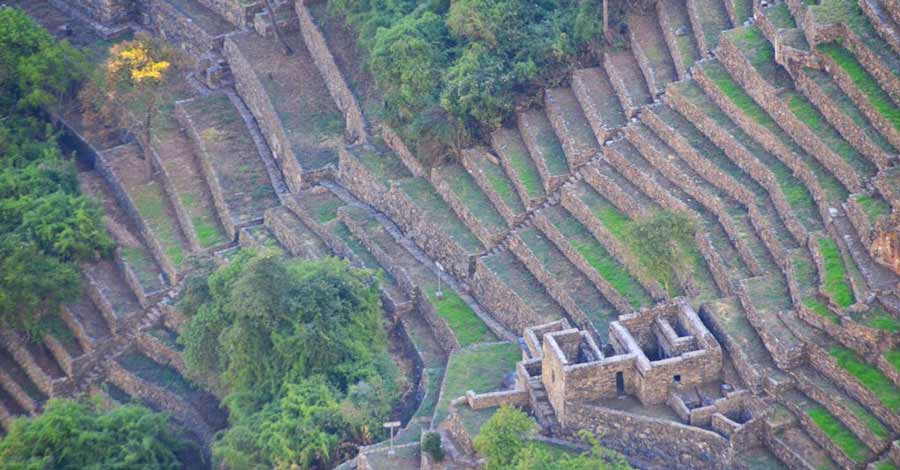
How to get to Choquequirao from Cusco?
The journey to Choquequirao begins in the city of Cusco. After a journey of 145 Km. of asphalt road and 10 km. of paved road we arrive to the town of Cachora.
How long is the Choquequirao trek?
From Cachora, the starting point of the 4 or 5-day trek, to the archaeological site of Choquequirao, the trek has a total distance of 32 Km/29 miles. These have to be covered again if it is a 4-day trek or increases or decreases according to the chosen return route.
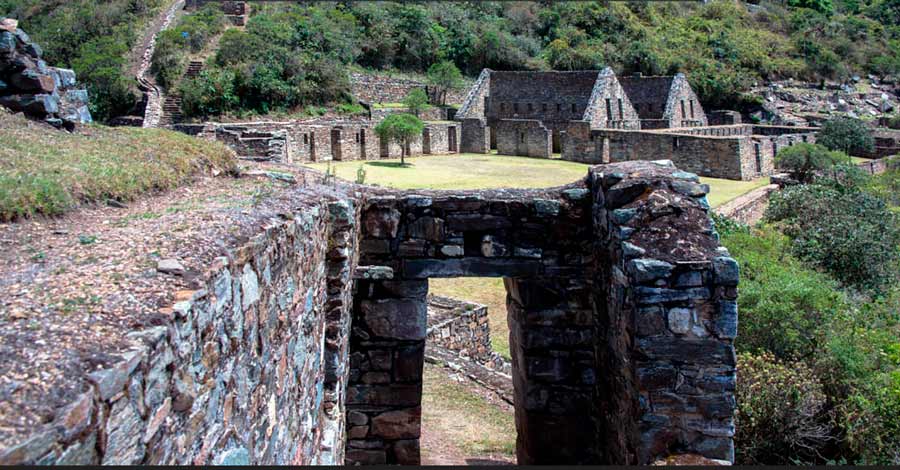
Do I need to book Choquequirao in advance?
Unlike Machu Picchu, the entrance fee to Choquequirao does NOT need to be paid in advance. The entrance fee is paid at the entrance to Choquequirao. This site is a less congested destination than Machu Picchu. Choquequirao receives an average of 20 tourists per day compared to Machu Picchu, which receives an average of 5,000.
How much does the entrance fee to Choquequirao cost?
The entrance fee to Choquequirao is 60 Peruvian Soles, the equivalent of about 18 U.S. dollars.
How far is Choquequirao from Machu Picchu?
As the crow flies, the total distance from Choquequirao to Machu Picchu is 43.8 kilometers. This is without taking into account the diverse geography of the Peruvian jungle and Andean zone where all these routes are located. However, the distance for a planned trekking route is 115 kilometers starting from Cachora.
The route of 8 days and 7 nights that includes the visit to Choquequirao and culminates in Machu Picchu is as follows.
DAY 1: CUSCO – CACHORA – PLAYA ROSALINA
DAY 2: ROSALINA BEACH – MARAMPATA – CHOQUEQUIRAO
DAY 3: CHOQUEQUIRAO – RÍO BLANCO – MAIZAL
DAY 4: MAIZAL – MINAS VICTORIA – YANAMA
DAY 5: YANAMA – TOTORA – COLLPA
DAY 6: COLLPA – LA PLAYA
DAY 7: LA PLAYA – HYDROELECTRIC POWER PLANT – AGUAS CALIENTES
DAY 8: AGUAS CALIENTES – MACHU PICCHU – CUSCO
On the other hand there is a route of 7 days and nights that varies slightly in camps and distances traveled per day, but that follows the same route to Machu Picchu.
DAY 1: CUSCO – CAPULIYOC – CHIQUISCA – PLAYA ROSALINA
DAY 2: ROSALINAS BEACH – MARANPATA – CHOQUEQUIRAO
DAY 3: CHOQUEQUIRAO – PINCHIUNUYOC
DAY 4: PINCHIUNUYOC – RIO BLANCO – MAIZAL
DAY 5: MAIZAL – YANAMA – TOTORA – LUCMABAMBA
DAY 6: LUCMABAMBA – LLACTAPATA – AGUAS CALIENTES
DAY 7: AGUAS CALIENTES – MACHU PICCHU – CUSCO
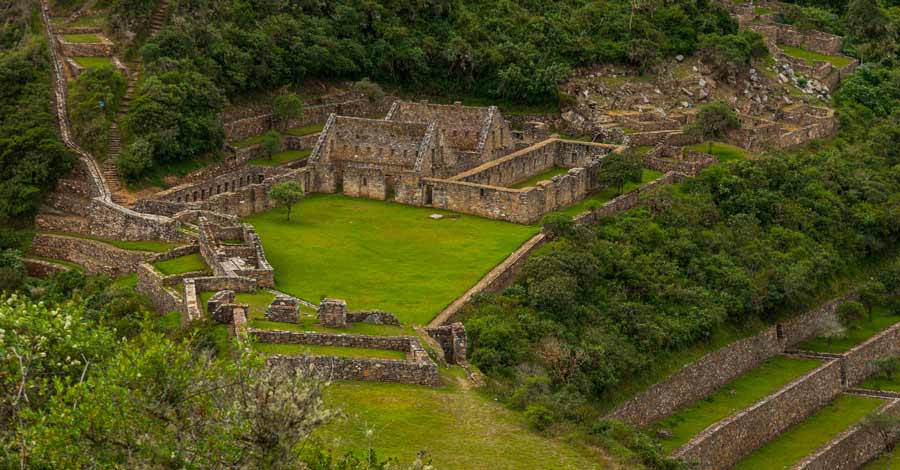
What to wear in Choquequirao hike?
We recommend for you packing list that you bring:
- Backpack & Daypack.
- Sleeping bag.
- Insect repellent.
- Hiking boots.
- Trekking Poles.
- Different clothing layers for variable temperatures, especially at night.
- T-shirts and trekking pants that zip off to shorter pants/shorts to enable you to have comfortable day walks regardless of the weather.
- Flashlight, or head torch.
- Camera with extra batteries.
- Sunscreen/hat and sunglasses.
- Personal medical kit.
- Rain Gear: poncho/ a good rain jacket for wet season.
- Toiletries / toilet paper / small towel.
- Water bottle water purifying tablets optional.
- Passport.
- Extra money for drinks & tips, souvenirs etc. (soles).
How to get best price Choquequirao?
The price is fully customizable and can be tailored and flexible to your personal preferences and style, the price is basically based on final accommodation, travel dates, and other custom preferences during the tour. You can consult the different trekking routes and costs with the best sales consultants at Auri Peru Travel. Leave your Choquequirao trek in the best hands.
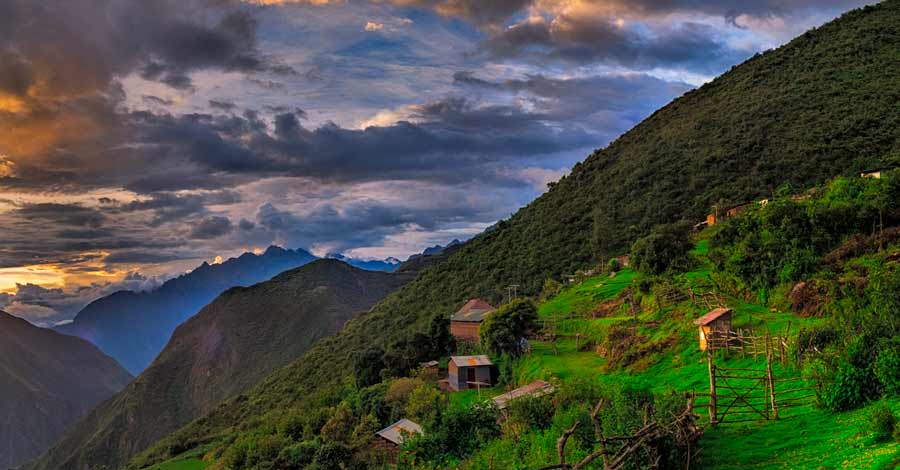
Peru has many amazing places waiting for you, discover the most enigmatic and beautiful places in Peru with us. Working for many years in the travel industry, Auri Travel is pleased to help you with your travel plans to Machu Picchu and various places around Peru, come and enjoy a memorable adventure with us!








